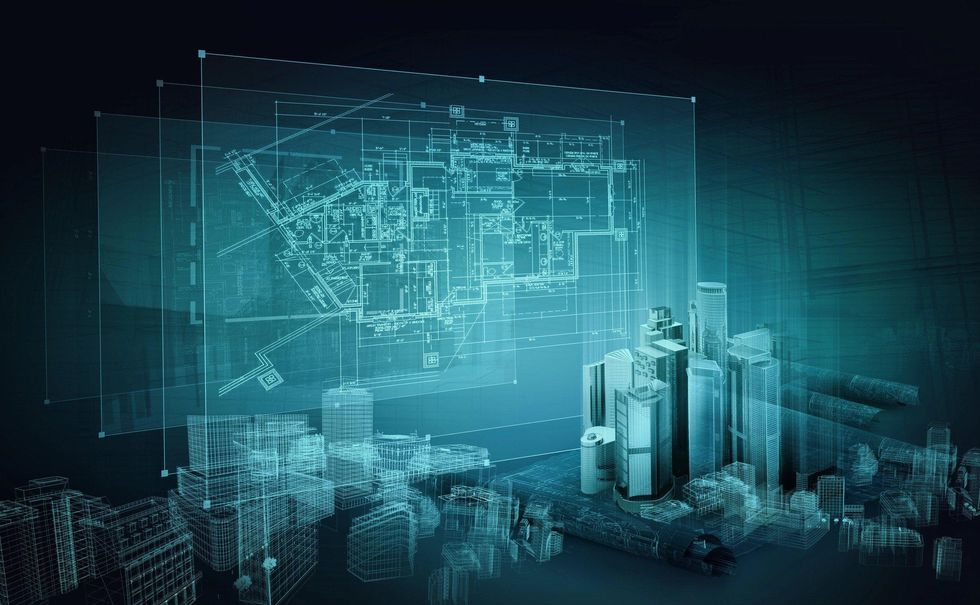.
Artificial intelligence (AI) and machine learning (ML) are rapidly changing the way buildings are designed and constructed. A new research paper by architect and researcher Giuseppe Gallo, with his team from the University of East London and the University of Palermo, has revealed how some of the top architectural firms are using these technologies to create the buildings of the future. This artificial intelligence in architecture research paper is one of the most interesting research on the field and I'll explain it for anyone interested
Artificial intelligence for the design process
One of the key findings of the research is that AI and ML are being used to improve the efficiency and effectiveness of the design process. For example, AI-powered design software can analyze large amounts of data and generate multiple design options based on specific parameters, such as energy efficiency and structural integrity. This allows architects to explore a wide range of possibilities and make more informed decisions about the final design.
Artificial Intelligence for the construction process
Another area where AI and ML are having a significant impact is in the construction process. For example, the use of drones and 3D scanning technology can help architects to create highly accurate models of existing buildings and sites. This information can then be used to create detailed construction plans and identify potential issues before work begins. Additionally, AI-powered construction robots can help to speed up the building process and reduce the risk of errors.
Artificial Intelligence for Smart Building
One of the most promising areas of research in the field of AI and architecture is in the development of smart buildings. These buildings use sensors and other technologies to gather data on how they are being used, and then use that information to optimize their performance. For example, a smart building might use AI to adjust the lighting and heating based on the number of people in the building and the time of day. This can help to reduce energy consumption and improve the comfort of the occupants.
Articial Intelligence and Computer-aided design simulations
Another potential benefit of AI in architecture is the ability to create buildings that are more resilient to natural disasters. AI-powered building simulations can be used to test the structural integrity of buildings and identify potential vulnerabilities. This can help architects and engineers to design buildings that are better able to withstand earthquakes, floods, and other extreme weather events.
Artificial intelligence for adaptive architeture
One of the most exciting possibilities for the future of architecture with AI is the development of buildings that can adapt to the needs of the people who use them. For example, imagine a building that can automatically adjust the temperature, lighting, and air flow based on the number of people in the building and their preferences. This could lead to a more comfortable and energy-efficient environment for the occupants.
One of the most interesting aspect of the paper is the conversation with the designers and researchers, which revealed that many architects are still uncertain about how to integrate AI and ML into their work. Some architects feel that these technologies are still in their infancy, and that more research is needed before they can be effectively used in the design and construction process. Others believe that it is not just about the technology itself, but also about how architects can adapt their design process to take full advantage of the new opportunities presented by AI and ML.
The challenges and opportunities of AI in architecture
Despite the many benefits of AI and ML in the field of architecture, there are also challenges that need to be addressed. For example, as the use of AI and ML becomes more widespread, there is a risk that architects could become too reliant on these technologies and lose their ability to think creatively and independently. Additionally, the use of AI and ML in the design and construction process raises ethical concerns, such as the potential loss of jobs and the impact on the environment.
To address these challenges, architects and researchers need to work together to create a framework for the responsible use of AI and ML in the field of architecture. This could include guidelines for the use of these technologies, as well as training programs to help architects and construction professionals to understand the potential benefits and limitations of AI and ML.
The future of architecture with AI
The research paper by Giuseppe Gallo is just the beginning of a new conversation about the role of AI and ML in the field of architecture. As these technologies continue to evolve and become more advanced, it is likely that we will see even more innovative and sustainable buildings being designed and constructed.
In conclusion, the research paper by Giuseppe Gallo and his team is a valuable contribution to the ongoing conversation about the role of AI and ML in the field of architecture. It highlights the many ways in which these technologies are already being used to improve the design and construction process and the potential for even more exciting developments in the future. As architects, researchers and professionals in the field continue to explore the possibilities, we are likely to see an even greater impact of AI and ML on architecture and design, which can lead to more sustainable, efficient and user-centered buildings.



















